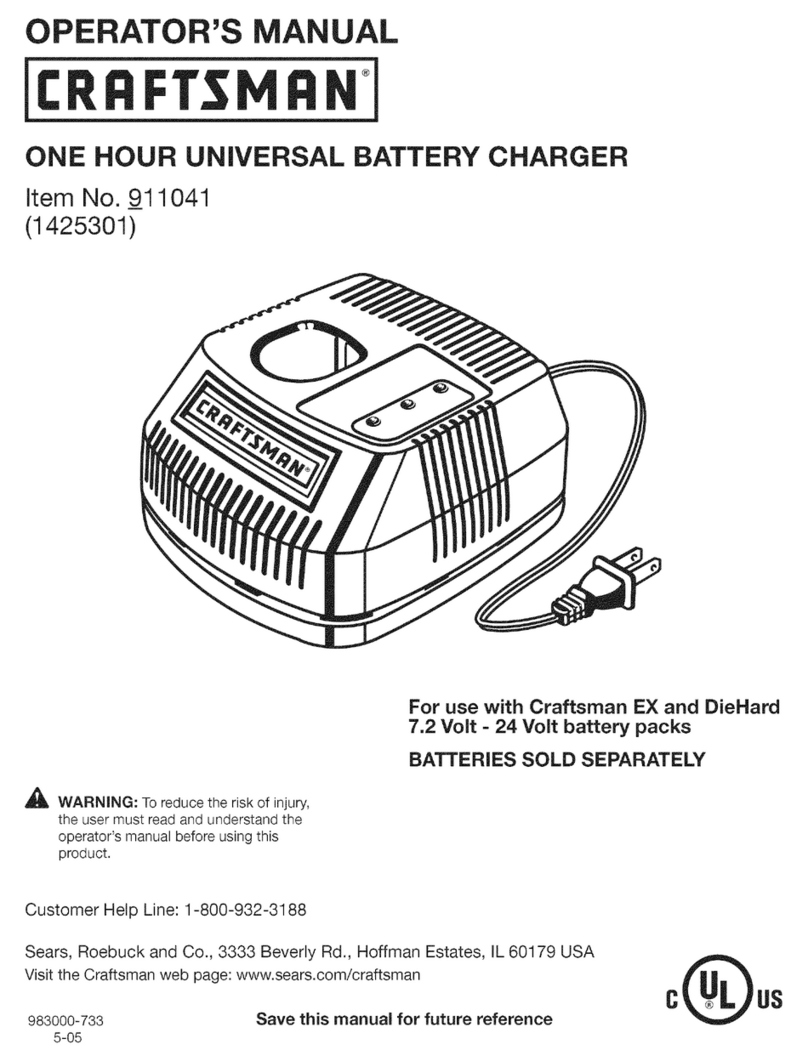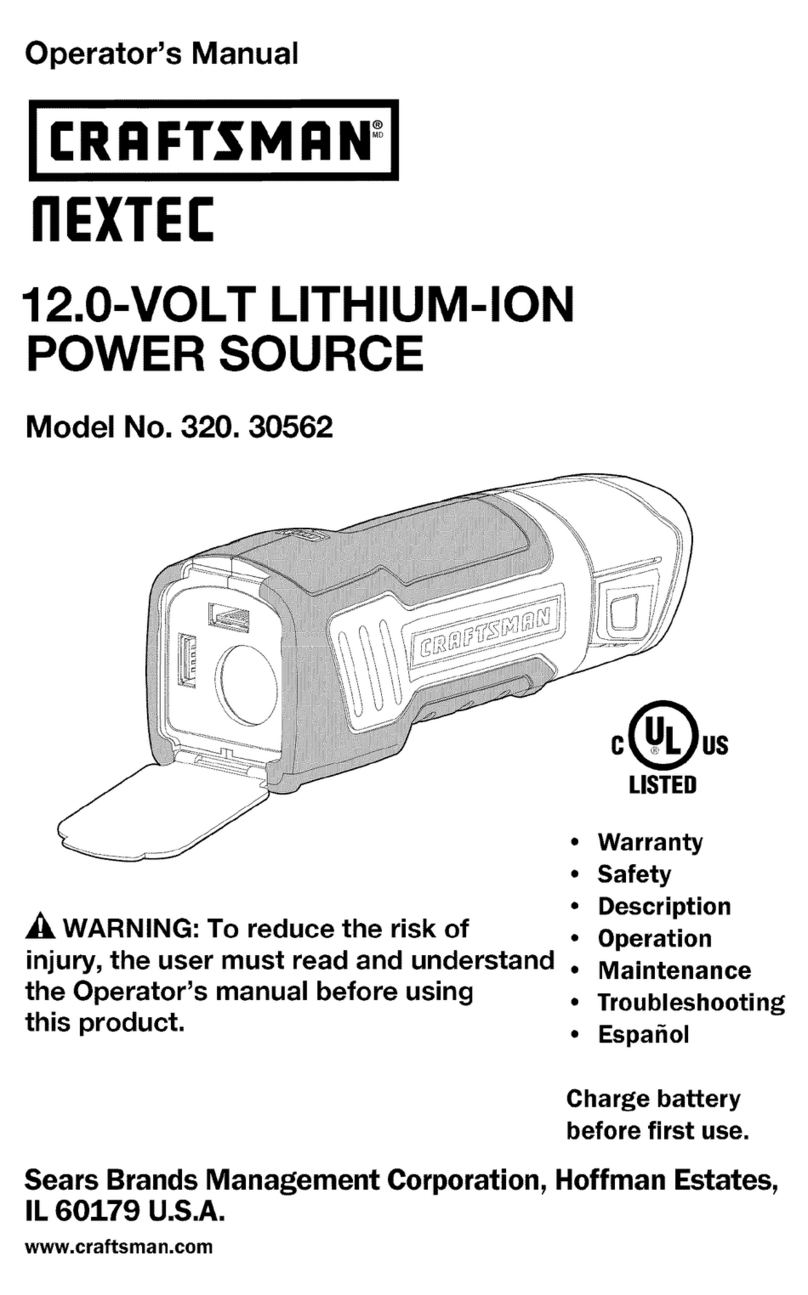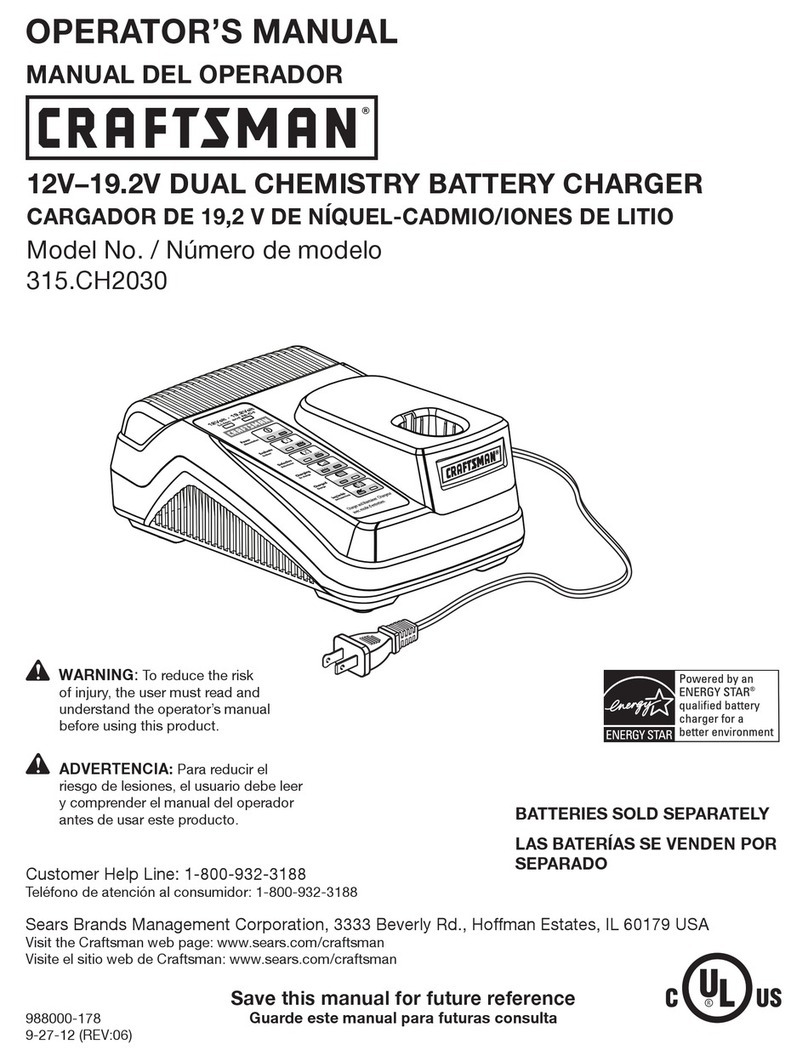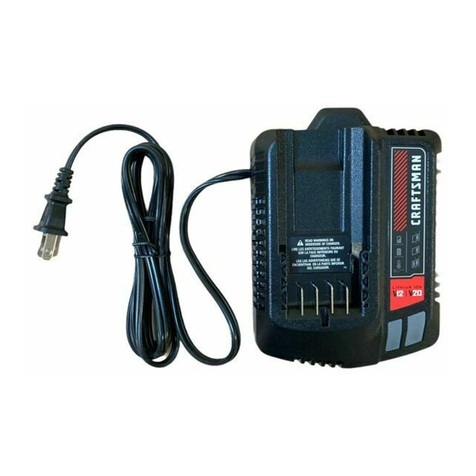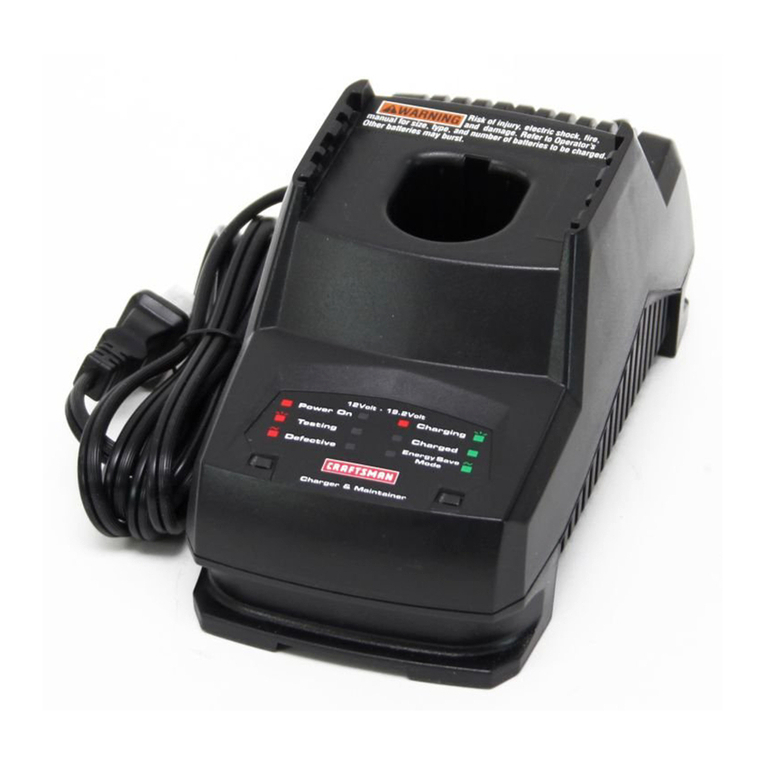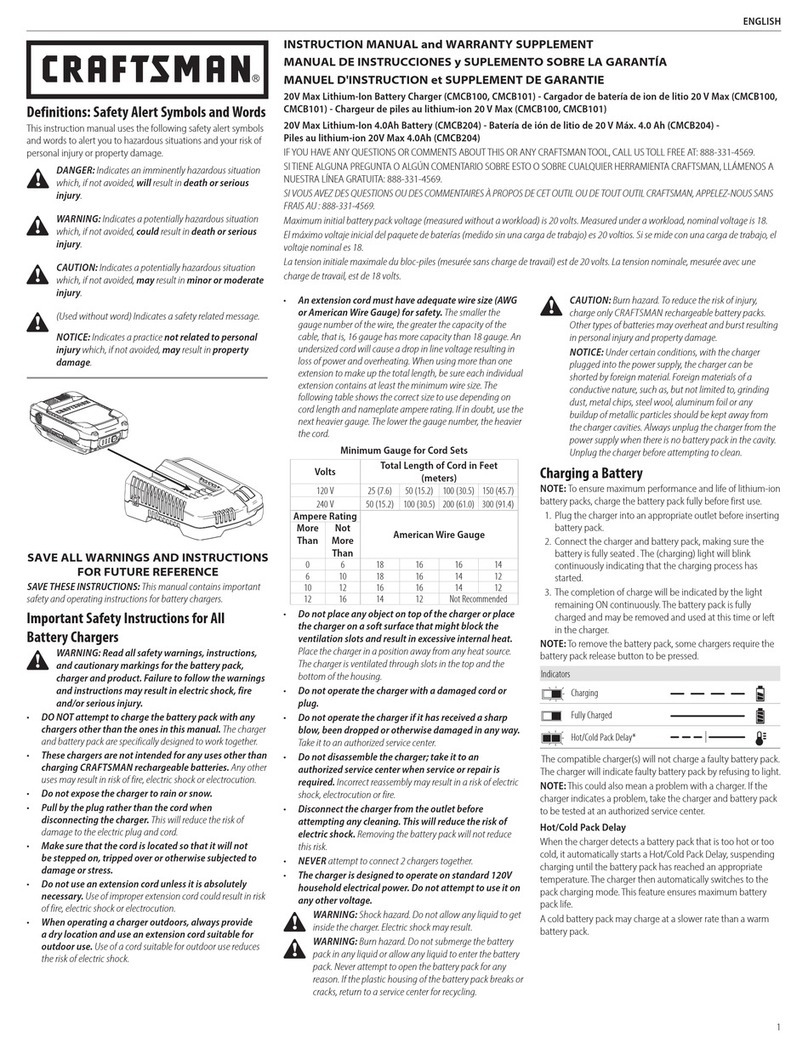IMPORTANT SAFETY INSTRUCTIONS
control(s) to their "OFF" position(s) alone will not remove all
electricity from the charger.
EXPLOSION HAZARDS
WARNING! - RISK OF EXPLOSIVE GASSES!
Working Jnthe vicinity of a lead-acid battery is dangerous.
Batteries generate explosive gasses during normal operations
and, at an even higher level, during charging. If anything is
allowed to ignite these gasses, the battery may explode, sending
pieces of the battery and extremely caustic battery acid out in all
directions and with extreme force. Since just the slightest spark is
sufficient to ignite these gasses, it is of UTMOST IMPORTANCE
that you read this manual and follow the instructions exactly,
before using your battery charger each time.
BATTERY EXPLOSION CAN KILL, INJURE, AND
CAUSE PROPERTY DAMAGE! To reduce the risk of battery
explosion, read, understand, and follow these instructions,those
published by the battery manufacturer, and those of the
manufacturerof any equipment you intendto use near the battery.
Review cautionary markingson these productsand on the engine.
If unableto determine the battery manufacturerer's requirements
for charging,always charge the battery withthe cell caps in place.
Inaddition,make certain that anyone else that uses this
equipment, or is a bystander inthe vicinityof a chargingbattery,
understandand follow these safety instructionsas well.
NEVER smoke or allow a spark or flame in the vicinity of the
battery or engine.
NEVER operate the battery charger in a closed-in area or restrict
ventilation in any way.
NEVER charge a frozen battery as battery explosion can result.
NEVER connect BOTH battery charger clamps DIRECTLY to the
twoposts of the same battery. SEE OPERATING
INSTRUCTIONS FOR PROPER CONNECTION PROCEDURES.
NEVER charge batteries other than a LEAD-ACID type.
Especially, DO NOT use for charging dry-cell batteries that are
4

